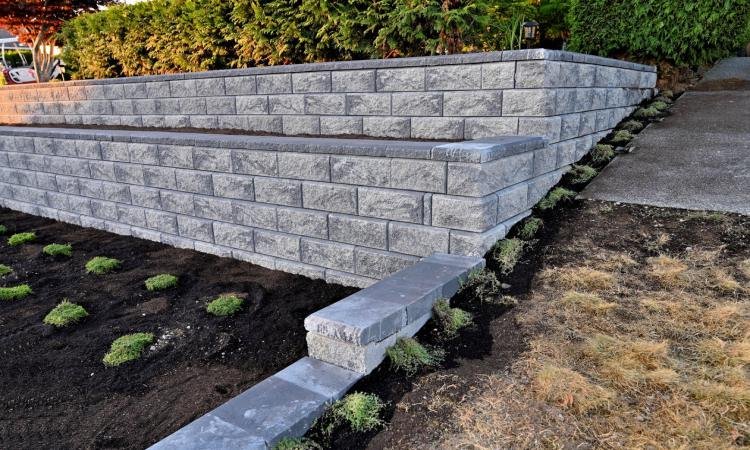 Do you own a nicely designed garden that eludes permanence? Maybe it’s been looking a little flat lately, no problem! Your garden area may be simply improved by adding grounded retaining walls.
Do you own a nicely designed garden that eludes permanence? Maybe it’s been looking a little flat lately, no problem! Your garden area may be simply improved by adding grounded retaining walls.
An anchored retaining wall, which holds soil in place, is ideal for making garden levels, tiered beds, or just improving the landscape. Retaining wall anchoring could be the best option if you require construction since it can also be utilized on construction sites.
An anchored retaining wall, also known as a tie-back system, primarily comprises of retaining wall anchors, cables, and thin walls. To balance the foundation, anchors are inserted into the earth. Retaining walls then hold the weight and are kept in place by sturdy cables that link the anchors and walls. On occasion, concrete and steel rods will be added to these buildings to improve them.
Types of anchored retaining walls:
-
With gravity:
Gravity is the most typical method of anchoring a retaining wall. To put it another way, you will use gravity to build a level and straight wall. If your slope has an inclination of fewer than 2 meters, you may wish to use a different approach. This method is often employed when the height of the wall or slope is larger than 2 meters.
-
With fastener:
A highly popular method of securing retaining walls is using screws. There are many different kinds of fasteners that may be utilized for this. They are designed to be utilized in order to provide a solid link between the wall and the ground and are often comprised of steel, metal, or concrete components.
-
With adhesives:
Utilizing adhesives is another well-liked method of securing retaining walls. Occasionally, an adhesive is referred to as “retaining wall points.” They are designed to be used to secure any kind of material to the ground, in other words.
Read more http://www.prints4sure.com
-
With bolts:
The most practical and effective anchors for retaining wall anchoring are bolts and brackets. They are often used to bend or shift the orientation of walls. They have a large capacity and are really simple to install.
-
With jacks and wedges:
Two different kinds of fasteners, wedges, and jacks, may be used to bend or shift the orientation of a retaining wall. When the slope angle is larger than 15 degrees, the jack is often utilized rather than a wedge, which is intended to be used to produce a smaller bend on the retaining wall (although this depends on the soil conditions where you will be installing your retaining wall).
-
Different materials:
When you want to give your wall a varied appearance, it makes sense to anchor retaining walls with various materials. They are often employed with polypropylene and adhesives for the creation of wood-plastic goods, as well as with concrete, mortar, or stone. Sand, clay, and various kinds of soil may all be used to anchor retaining walls. How you attach your wall to the ground will depend on the kind of soil on which you want to construct your retaining wall.
-
Metal brackets and straps:
To adjust the direction or bend a retaining wall, metal brackets are quite helpful. While retaining walls that are straight are built using straps. Typically, they are built of steel or aluminum.
Advantages of anchored retaining walls:
Retaining wall anchoring has a ton of benefits! Some of them consist of:
- More stability Your anchor wall will have a trustworthy degree of stability if you use an anchor and cables that are deeply embedded in the ground.
- Support larger weights. Similar to this, even larger weights may be supported thanks to the strength of the cables as well as the size and placement of the anchor.
- Thinner than other choices. The anchor wall utilized is substantially thinner, which not only saves space but also makes it simpler to assemble and move!
- Economical. Anchored walls are a fantastic long-term solution since they need less maintenance than other choices.
- Protecting the slope. This choice is ideal for creating and maintaining slopes since the primary function of retaining walls is to keep soil in place.
- Safer digging. A safer construction site results from integrating the anchor in larger projects.
Final thoughts:
Following the installation of the anchor blocks, the backfill will be applied. The dirt behind should be compacted to increase the grip of the tiebacks (wires or rods). Behind the retaining wall, the tiebacks are drilled between 15 and 45 degrees into the ground.
An anchored retaining wall can be the finishing touch you’ve been looking for in your garden, backyard, or front path. Check here to visit concrete retaining wall sleepers.




